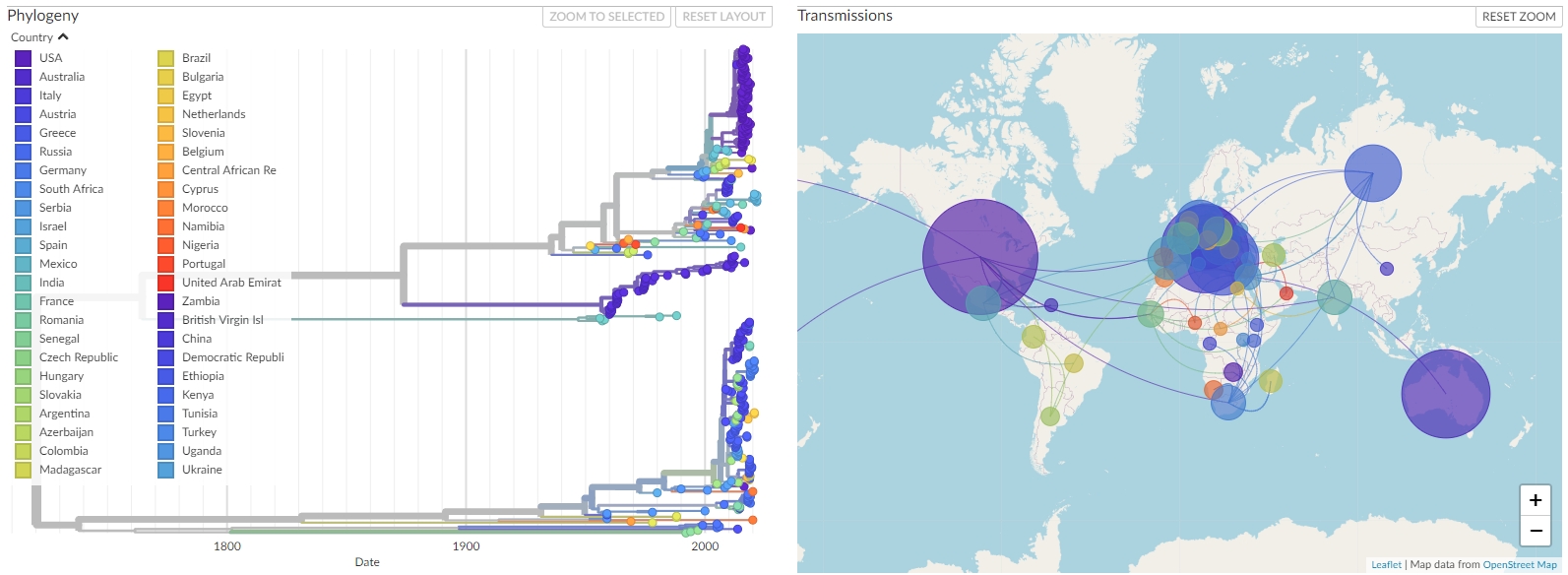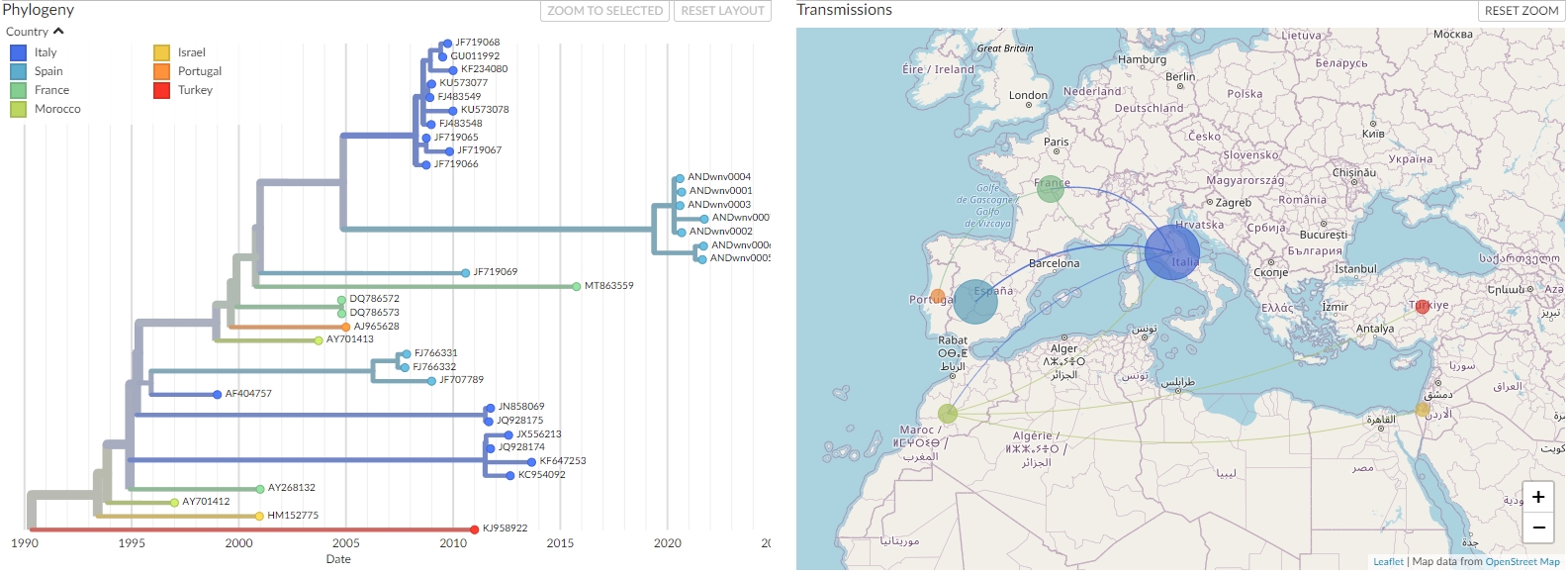Project
West Nile virus (WNV), a member of Flavivirus genus, is transmitted in an enzootic cycle involving birds as amplifying hosts and mosquitoes as vectors [1], which can ultimately be transmitted to mammals, considered dead-end hosts, causing disease outbreaks in horses and/or humans [2]. Currently, the virus is considered a recurrent zoonosis with a wide geographic distribution [3]. Phylogenetically, WNV are classified in eight lineages [4], although highly pathogenic strains belong mainly to lineages 1 and 2 [5]. There is evidence of WNV circulation in Europe since the 1950s [6] and the first recognized outbreak in humans occurred in 1962 in southern France [7]. Lineage 1 had been identified in the majority of out-breaks in horses and humans in Europe [8].
In August 2020, five West Nile Fever (WNF) human cases with unknown lymphocytic meningoencephalitis were first identified in the province of Seville (Andalusia) in two neighboring municipalities in front of the Guadalquivir marsh (Puebla del Río and Coria del Río) beginning an outbreak that comprised 71 humans, with eight deaths, as reported by Andalusian Epidemiological Surveillance System (SVEA).
A detailed analysis of the 2020 outbreak, including an extensive phylogenetic analysis was carried out [9]. As part on this effort, we implemented a local Nextstrain server, which has become a constituent piece of regional epidemiological surveillance, wherein forthcoming genomes of environmental samples or, eventually, future outbreaks, will be included.
Initial sequencing was carried out by the Genomics Unit of the Genyo (Granada)
Routine clinical sequencing is carried out by the Microbiology service of the Virgen de las Nieves Hospital (Granada)
Data analysis and genomic epidemiology is carried out by the Clinical Bioinformatics Area, Fundación Progreso y Salud (Sevilla)
See the WNV in a worldwide context: http://nextstrain.clinbioinfosspa.es/wnv
 See the WNV Andalusian outbreaks in a Mediterranean context: http://nextstrain.clinbioinfosspa.es/wnv-med
See the WNV Andalusian outbreaks in a Mediterranean context: http://nextstrain.clinbioinfosspa.es/wnv-med
